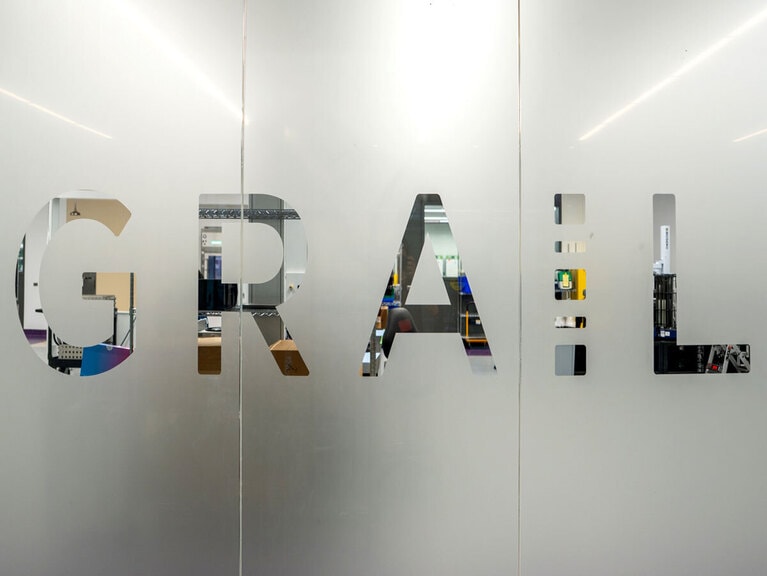The stocks that made up the inaugural S&P 500 in 1957 survived an average 61 years at the time. In 2020, companies listed on the index averaged 21 years, and some forecasters are suggesting that by the end of the decade the average business lifespan may be around 12 years.
There are numerous reasons why the life expectancy of companies is getting shorter. The pace of technological advancements continues to accelerate at a faster rate than ever before, mergers and acquisitions are at an all-time high, market entry barriers for competitors are lower than at any time in history, and unprecedented levels of funding are boosting entrepreneurs in developing economies.
There are companies, however, that have managed to ride out these disruptions and adapt. Firms with century-old legacies often share similarities, which makes understanding those common factors crucial for investors who want to identify companies that are likely to stick around.
Pointers from the past: Tumbling titans
The best way to find companies likely to stay the course is to look at why others don’t. “If you invert everything, you get an intuitive picture of what won’t last,” Chris Mayer, co-founder and portfolio manager at Woodlock House Family Capital, tells Opto. “Companies that [failed] have an ill-defined purpose with lots of financial leverage, low profits, lack of innovation, easy to copy products, short-term relationships with vendors and customers, lots of employee turnover and repeatedly turn the cold shoulder on community. Look for the opposites of these in any potential investment.”
One of the biggest common factors among companies that didn’t last was an unwillingness to adapt to changing industry trends and customer behaviours. “Complacency has killed far more companies than strategic mistakes,” Stéphane Garelli, professor emeritus of world competitiveness at the Institute for Management Development in Lausanne, tells Opto. “Many companies say: ‘everything is fine, why should we change?’ and then crash into a wall.”
This was exactly the case with Kodak [KODK]. It recognised the market was changing, but chose not to pivot. At the turn of the millennium, the company enjoyed 80% of the photo processing chemicals and paper market, which accounted for 72% of its profit. Contrary to popular belief, it did invest heavily in digital technology, but blundered by sticking to its core products. The rise of mobile technology and social networks such as Facebook [META] over the past 20 years has made consumers prefer to share photos online rather than print them, marking the end of the famous ‘Kodak moment’. Ironically, a company whose tagline was about capturing memories failed because it couldn’t let go of its past.
Kodak’s closest rival, however, faced down the crisis with a different strategy and boomed. Fujifilm [4901.T] arguably spotted the danger at the same time but moved fast to appoint Shigetaka Komori as CEO in 2003, who within weeks closed half the company’s film manufacturing plants, cutting 5,000 jobs and lowering operating costs by $500m. He redeployed its R&D advances into pharmaceuticals and skincare (neatly promising ‘photogenic beauty’) and diversified its scientists out into cancer diagnostic imaging such as X-rays and mammography.
Because the photographic film market was shrinking, Komori saw that the situation was critical. He decided to combine the company’s management resources, technology and finances into a strategy and wasn’t afraid to jettison the products that had made its name. As Canon [CAJ], Sony [6758.T] and Hewlett Packard [HPQ] developed cheaper digital cameras, Fujifilm withdrew from the market. As of early 2022, only around 1% of its income comes from traditional photography.
“You look for companies that show they can reinvent before they have a problem,” says Garelli, who is also a professor at the University of Lausanne. “Smarter ones see danger coming and steer themselves out of the way. [Hewlett Packard co-founder] Bill Hewlett said: ‘I need to be my own competition, so I know when to kill my products and replace them with something better before a competitor does it.’”
The elixir of corporate life
“To survive, companies need to beat the fade or be resilient,” Martin Reeves, chairman of the BCG Henderson Institute, a San Francisco-based business innovation and strategy thinktank, tells Opto. Having an active management strategy is a crucial mindset to maintaining an edge over the competition, he explains.
It’s a factor that Reeves considers when ranking companies based on BCG’s Fortune Future 50 vitality index, the holdings of which are chosen using a 16-factor algorithm that measures growth potential and capacity to deliver future returns.
Topping this year’s list is cloud security firm CrowdStrike [CRWD]. CEO George Kurtz has a “tenacious” attitude to innovation and its superior scalability to meet a growing demand for cloud security suggests it will outpace its competitors for a while yet. But this is its first year on the ranking — more established names such as Salesforce [CRM], Netflix [NFLX], Workday [WDAY] and Atlassian [TEAM] have repeatedly made the list, suggesting their growth and potential to outlast rivals remains consistently strong.
Reeves explains that companies can create short-term value by optimising costs or assets or building investors’ expectations. However, long-term value creation comes from top-line growth. The challenge is, he says, that the age and size of a company have a negative impact on this and, therefore, the company’s vitality.
“Companies must have the ability to develop further growth options, an entrepreneurial spirit that facilitates continued exploration even when in the midst of an existing success.” BCG’s analysis of data that included 70,000 company annual reports showed a direct correlation between long-term strategic goals and revenue growth, including investing and building a company’s capacity to grow.
But the other quality of companies likely to enjoy longevity, Reeves says, is an understanding of what resilience really means. “A lot of people think it’s crisis management or risk management, but it really is about the whole economic cycle,” he says. “Between one-third and two-thirds of long-term performance is determined by resilience in a crisis.”
Reeves defines four factors that can help investors spot sustainable companies: anticipation and preparedness, buffering, adaption and reimagination. By stress testing, a company can prepare cash reserves or alternative supply sources for scenarios where an agile business may need to pivot. After a crisis there’s always a shift in demand, which is an opportunity for the quickest companies to move, often accelerating an opportunity they’d already spotted.
All of these factors, he says, can be sourced from either annual reports, news articles or direct questions to company bosses during events like earnings calls, along with analysing other publicly available data, such as how much of a company’s profit is down to R&D.
The Fortune Future 50 index has consistently outperformed the market since its inception in 2017, as have companies which have been sufficiently well steered to successfully navigate the past 60 years. Since the S&P 500 was launched, every one of its ever-present members has outperformed the index itself. These include legacy companies such as JPMorgan Chase [JPM] (founded in 1799), General Electric [GE] (1878) and Coca-Cola [KP] (1892), which have continued their core business. Even stocks that have diversified, such as ExxonMobil [XOM], which was founded by Standard Oil in 1870 and has since expanded into biofuel, carbon capture and renewable diesel initiatives, have stayed in the index.
“Between one-third and two-thirds of long-term performance is determined by resilience in a crisis” - Martin Reeves, BCG Henderson Institute
Firms that are more than a century old also share traits of success, US portfolio manager Chris Mayer says. His book 100 Baggers, which studies the trajectories of US businesses that have been trading for more than 100 years, suggests investors should be able to spot common strong corporate mission and culture, close relationships with business partners, good employee relationships and, increasingly, an altruistic willingness to support causes and campaigns that are important to their customers.
The general strength of an entire industry or sector can also indicate whether it’s stagnating. When the S&P expanded to 500 firms in 1957, industrials made up one-third of stocks. As of 31 May 2022, the sector’s weighting has plunged to just 7.8%. Consumer staples have similarly trended downwards, from 14% to 6.5% in the same period, and have been replaced by healthcare stocks, which account for 14.4% — three times higher than when the index launched. But the clear runaway leader going forward is, of course, information technology. Tech stocks didn’t begin to appear in the S&P 500 until 1969. Now the sector accounts for nearly 30% of the index.
Tech has been the S&P’s leading sector since the 1990s, with its weighting growing from 20% to 27.1% since the turn of the millennium. Other notable changes in the same time frame have seen the consumer discretionary industry more than double from 5% to 10.9% of the index and communication services grow from 6% to 8.8%. However, over the same period financials have fallen away — a sector that once made up close to one in five stocks now accounts for just over one in 10.
A corporate culture for staying the course
IBM [IBM] stands out among legacy technology incumbents for its ability to confound doom-mongers since its launch in 1911. “IBM was predicted to fold in the 1910s, 1930s, 1960s and 1990s, but it didn’t. Today, it remains an iconic firm with a healthy balance sheet that still pays dividends,” former employee James Cortada, who authored a book about the company’s history called IBM: The Rise and Fall and Innovation of a Global Icon, tells Opto.
Cortada pinpoints a specific decision in IBM’s timeline that helped it to fix its company culture. The moment was when it stopped bleeding billions of dollars by bringing in outsider CEO Louis Gerstner in 1993. Cortada recalls that Gerstner shook up management systems by replacing individual bonuses with across-the-board rewards for overall company performance, which instantly broke down competition among colleagues and fostered a team culture. “IBM continued thanks to [its decision to] return to an inclusive, mutually supportive company culture. Get that right and you are well on your way to multi-generational success.”
What made IBM’s shift achievable was the fact that its leadership was willing to trust in a new CEO to execute a strategy that would prove worthwhile. “The secret of longevity for any size company is excellence in implementation, it’s 95% of the game,” Garelli says, adding that it becomes a paradigm shift that many founders can’t achieve.
“IBM was predicted to fold in the 1910s, 1930s, 1960s and 1990s, but it didn’t. Today, it remains an iconic firm with a healthy balance sheet that still pays dividends” - James Cortada, University of Minnesota
While nothing is certain in today’s fast-moving tech world, the beliefs and behaviours that determine how a company’s employees interact and handle business are integral. Microsoft’s [MSFT] decision to also reinvent its culture suggests that, like IBM, it was a move that helped it to stick around. When Satya Nadella became CEO in 2014, he identified the same challenges as Gerstner had at IBM, which included an inward-looking, self-serving interdivisional rivalry among colleagues that were more interested in competition than serving customers.
“Many companies are extremely well organised yet are unsuccessful, while others are totally disorganised and very successful. The difference is the mindset — creating a culture reflecting its employees’ values,” Garelli says. A company where employees are encouraged to problem solve and improve processes together is more productive — and has a much higher survival chance — than one with a culture of terror where people are too scared to report issues.
Innovation is key to sustaining success
It’s not only company culture that keeps customers coming back, but also innovation. The main reason P&G has stayed on a near 200-year course is its constant developments and advancements in its products. “Innovation has always been in our DNA,” James Kaw, director of P&G’s Singapore Innovation Centre, proclaimed at the U Future Leaders Summit in 2017, adding that it is crucial to reducing costs and adding value.
A pivotal point in P&G’s history came during World War II. As the US entered the conflict after Pearl Harbour, many corporate personnel across the country were focused on the war effort. In contrast, P&G retained one eye on innovation. It set up a small team headed by David Byerly to use the wartime years to hone a secret, revolutionary new detergent codenamed Project X, which not only cleaned but removed embedded old stains. Tide was completed in 1944, launched in 1946 and to this day remains the world’s best-selling washing powder.
When it comes to innovation, Apple [AAPL] is a storied example. The stock had been stagnating before Steve Jobs was brought back into fold in 1996. His plan was to invest his way through the downturn in innovation, which was the philosophy that eventually saved the business. Instead of laying off employees, Jobs increased the R&D budget, helping the company to develop the iPod during the dot-com fallout. Apple later rode out the financial crash with its flagship iPhone, which to this day still accounts for the majority of its revenue.
Tim Cook, who became CEO in 2011, kept the same mantra with the world in the grip of Covid-19. In 2020, as corporates scrabbled to save or consolidate what they had, he announced the company’s next 12-month plan would “keep investing in R&D and the development of future products and services”.
Facing a confident future
The key for investors is to do their homework. Although factors such as corporate culture, innovation and adaptability can seem nebulous, investors can look for detailed clues that reveal where a company is heading — and the information is all out there. These can include employee satisfaction surveys, track records of innovating against shifts in demand, company spending in financial reports as well as asking questions on an investor call about supply chain resilience, risk strategy and alternative revenue streams. “If you ask these sorts of questions, you can spot the companies that are resilient and dynamic in ways that staring at EPS and ROI data will never tell you,” Reeves explains. Looking at the corporate landscape of 2022, Reeves has identified three companies that have adapted to change very successfully over the past few years, suggesting a potential for long-term growth.
He singles out Stanley Black & Decker [SWK] for its ability to anticipate the interruption of supplies from the far east before Covid-19 broke out. “The company also spotted, weeks before anyone else, the shift from the professional tools market to home improvements. That gave them an opportunity,” he points out. It was indeed what helped the firm post a year-over-year revenue increase of close to 20% in March 2022.
Reeves also cites Zoetis [ZTS], the global animal health company, which was in a prime position to benefit from the rise in pet ownership following the pandemic. Expedia [EXPE] and Airbnb [ABNB] also quickly seized the opportunity to invest in secluded social distancing properties when the hotel industry stood still. “All of these companies showed the initiative, the resilience and the ability to defer the fade, which indicates they are strong candidates to be able to react and adapt and thrive going forward.”
Ultimately, while the ability to adapt to disruption is a strength, Garelli warns that investors should also look for companies that reposition for the right reasons and avoid those that seem to change for change’s sake. “Successful firms need a mindset for adaptability but there are many things they shouldn’t change, including their value system, basic principles and ethical approach. The successful, reliable firms are those with an anchor, a moral compass and reliable needle always pointing north. That keeps them grounded, enabling them to ride out the tempest.”
Disclaimer Past performance is not a reliable indicator of future results.
CMC Markets is an execution-only service provider. The material (whether or not it states any opinions) is for general information purposes only, and does not take into account your personal circumstances or objectives. Nothing in this material is (or should be considered to be) financial, investment or other advice on which reliance should be placed. No opinion given in the material constitutes a recommendation by CMC Markets or the author that any particular investment, security, transaction or investment strategy is suitable for any specific person.
The material has not been prepared in accordance with legal requirements designed to promote the independence of investment research. Although we are not specifically prevented from dealing before providing this material, we do not seek to take advantage of the material prior to its dissemination.
CMC Markets does not endorse or offer opinion on the trading strategies used by the author. Their trading strategies do not guarantee any return and CMC Markets shall not be held responsible for any loss that you may incur, either directly or indirectly, arising from any investment based on any information contained herein.
*Tax treatment depends on individual circumstances and can change or may differ in a jurisdiction other than the UK.
Continue reading for FREE
- Includes free newsletter updates, unsubscribe anytime. Privacy policy





